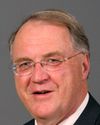Mr. Speaker, I am pleased to rise in the House today to present a petition in support of a national housing strategy. Over the past year, a group of petitioners has been working within my riding and beyond its borders to address the problem of a lack of affordable housing in the city of Toronto, and in parts of my riding in particular. The petitioners are calling upon us to engage all Canadians in a discussion regarding a national housing strategy. I will be asking that the human resources committee take that on.
House of Commons Hansard #120 of the 40th Parliament, 3rd Session. (The original version is on Parliament's site.) The word of the day was regard.



















